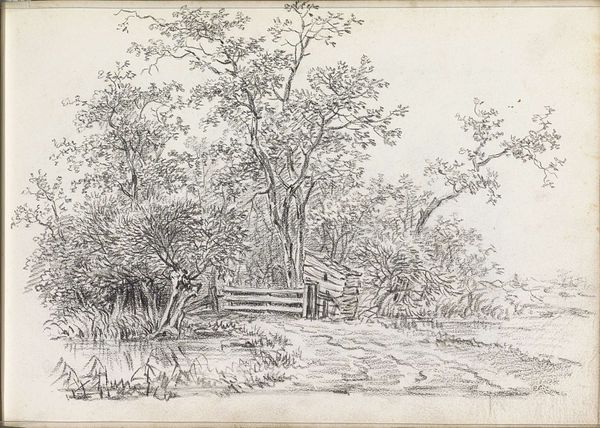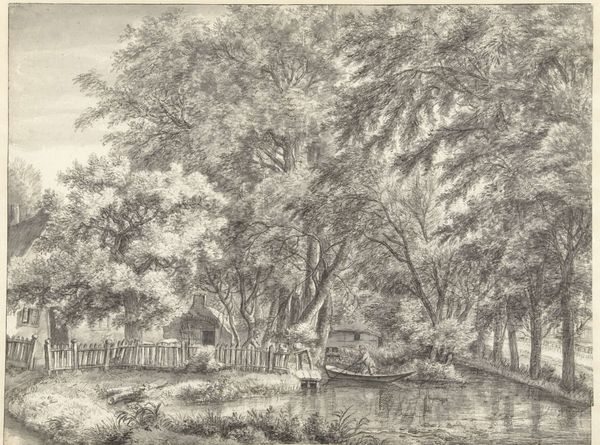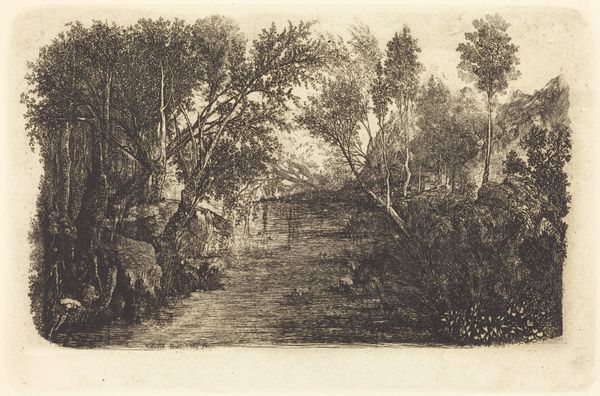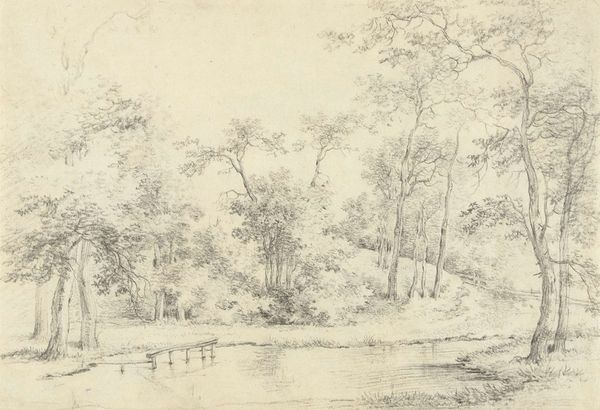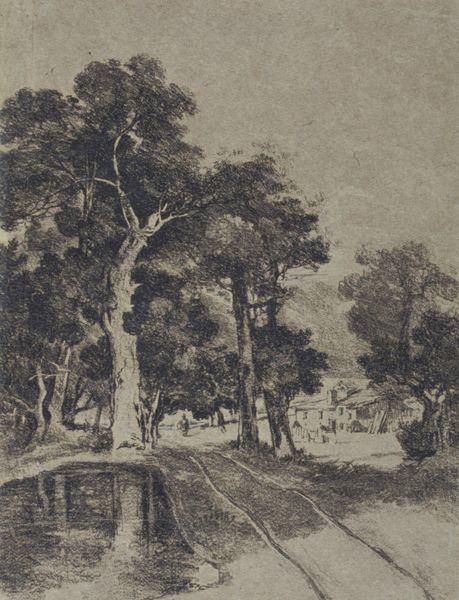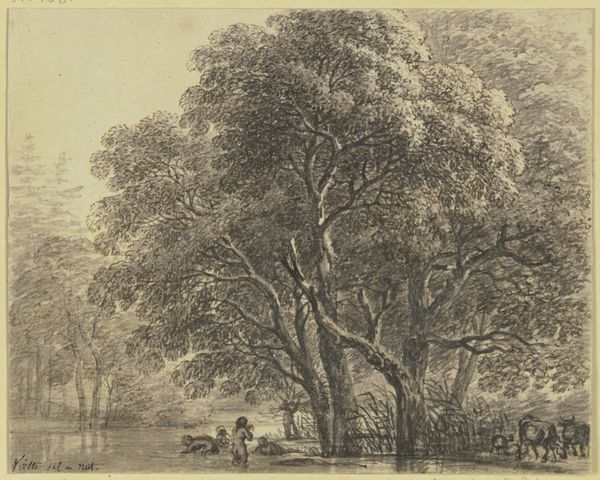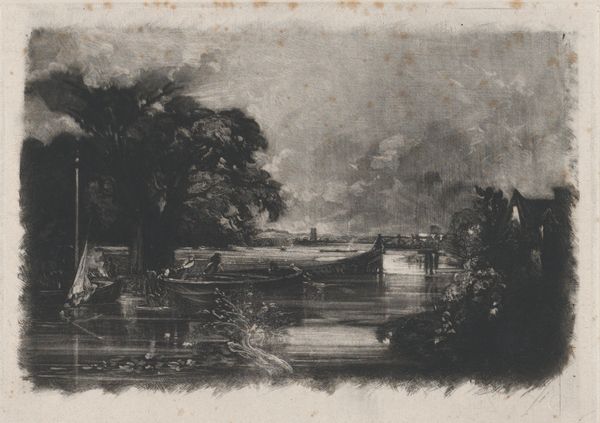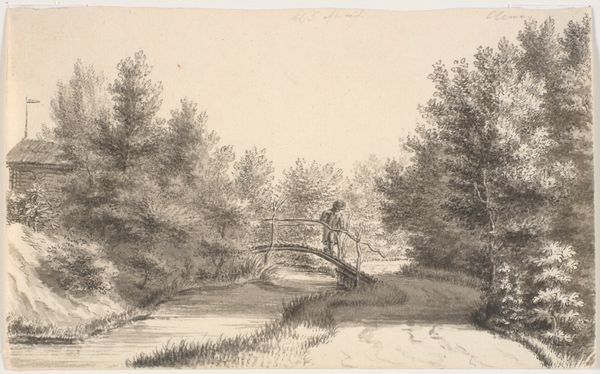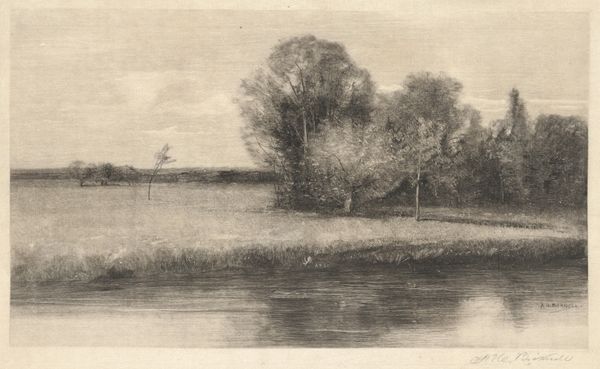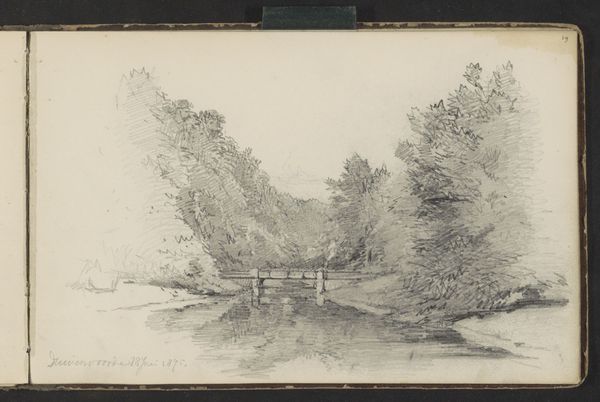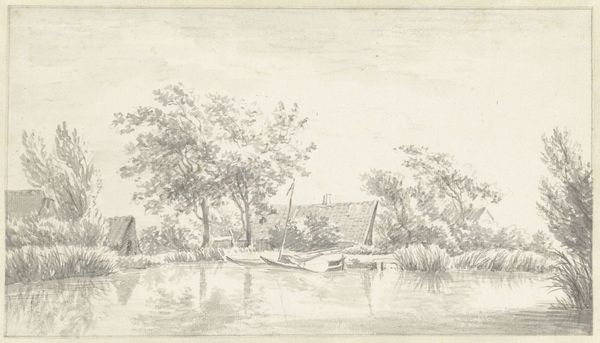
drawing, print, pencil
#
drawing
# print
#
pen sketch
#
pencil sketch
#
landscape
#
pencil
#
realism
Dimensions: image: 11.43 × 17.15 cm (4 1/2 × 6 3/4 in.) sheet: 13.65 × 19.69 cm (5 3/8 × 7 3/4 in.) plate: 14.29 × 20 cm (5 5/8 × 7 7/8 in.) support: 30.48 × 48.26 cm (12 × 19 in.)
Copyright: National Gallery of Art: CC0 1.0
Editor: My goodness, this landscape whispers such stillness to me. It's like a childhood memory, the light through the trees, lazy afternoons…makes you want to just breathe. Curator: Indeed. This piece is titled "Willows," attributed to Carl C. Brenner and created somewhere between the 1870s and 1880s. As a drawing or print, we see Brenner's command over rendering this quiet, rural scene using primarily pencil, and maybe some pen for detailing. It's worth examining what "stillness" meant, socially, in this post-Reconstruction moment. Editor: Right. The socio-political landscape informs the artistic landscape, always. To me, it's interesting the way that rough sketch, a few lines, a shadow create depth. Brenner's done that! It has me wandering through there. I wonder if that broken bridge held up something important back in the day? Now these children, carefree, don’t even mind that it is broken. Curator: Absolutely, Brenner uses those precise contrasts in shading to generate not just depth, but also emotional layers. Note that the materiality -- paper and pencil or ink-- become relevant considerations, especially as technology and social expectations evolved for making and viewing art. Also to question this landscape, not just how it appears on the surface, but to ask why it matters, whose gaze informs our perception of it. Are we romanticizing a rural past without questioning labor and land ownership? Editor: Now that’s true too, to question who lived there and what did landscape mean to different populations. I still feel moved, nonetheless. Maybe there were hard lives for many, but Brenner has captured something universal. Curator: Universality can be a slippery concept, since historical contexts often show that values weren't universal but culturally and class-based. To move forward it will do us good to keep our thoughts multi-directional; it's through such questioning that we become alert not just to beauty, but to inequity, that we learn and do better, and look at art in more robust and useful ways. Editor: Absolutely! I feel like these layers of conversation are so important for truly seeing what an artwork can reveal. Thanks for that deeper gaze.
Comments
No comments
Be the first to comment and join the conversation on the ultimate creative platform.
